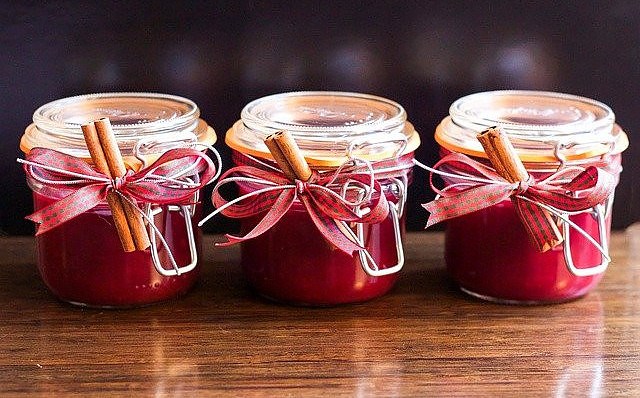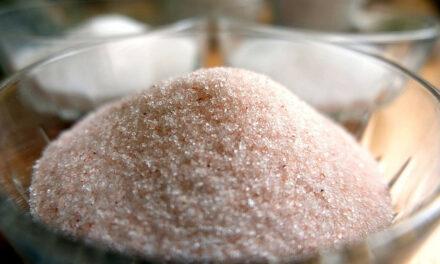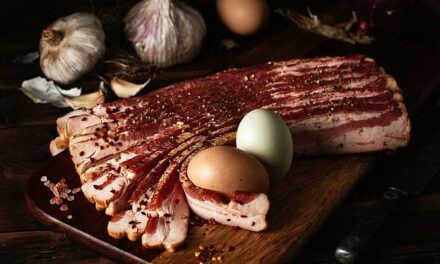This comprehensive article investigates cranberry and its effects on people with diabetes. As a health expert with years of experience in researching nutrition and diabetes management, I am excited to explore the potential benefits of cranberries for individuals with diabetes. Join me as we uncover the nutritional value of cranberries, examine their health benefits, and discover if cranberry sauce can be a diabetic-friendly addition to your diet. In particular, we will be looking at cranberry sauce to answer Is Cranberry Sauce Good for Diabetics?
Let’s start rolling with some background information about Diabetes and Cranberry…
WHO defined diabetes as a chronic disease that occurs either when the pancreas does not produce enough insulin or when the body cannot effectively use the insulin that it produces. Insulin is the hormone that’s responsible for regulating blood sugar levels.
There are two types of diabetes that can be differentiated: Type 1 Diabetes that occurs when the pancreas produces little or no insulin, and Type 2 Diabetes, also called non-insulin-dependent or adult-onset, occurs when the body is ineffective in using insulin.
Type 2 diabetes is the more common of the two and will also be the main focus of this article. It is primarily the result of excess body weight or physical inactivity.
Some of the long-term consequences of Type 2 Diabetes include damage to the heart, blood vessels, eyes, kidneys, and nerves. Still, it’s easily preventable (or postponed) by leading an active and healthy lifestyle.
As I mentioned earlier, the more precise topic of this article, besides Type 2 Diabetes, will be the health effects of cranberry – or rather, cranberry sauce, on the illness.
If that is what you’re curious about, read on.
What is Cranberry?
Cranberry is a name for a group of evergreen dwarf shrubs of the genus Vaccinium. They are native to North America, where they were grown both for food and for dye, but are now grown all over the world.
The first reference to American Cranberry comes from 1550, when James White Norwood referred to Native Americans using cranberries.
In the places where they’re grown, they are a popular food – as pie filling, their juice is a well-loved beverage, and their sauce is associated with American and Canadian Thanksgiving and Christmas meals.
As for the physical description, Cranberries are a low-growing, woody plant with small, ovate leaves. They can grow horizontally to up to 6 feet (2m) tall.
Upright, each branch might contain up to seven bell-shaped flowers that first appear in June and are mainly pollinated by bees.
Cranberry harvesting season is between September and October, and it can happen in two ways; wet or water harvest, in which the field is flooded, and berries are beaten off of the plant, or dry harvest, in which the fruit is combed off of the plant.
More about the nutritional value of cranberry in the next sections.
Cranberry Nutrition Content
The table shows the nutritional value of 100g of raw, fresh Cranberries.
|
Water |
87,32g |
|
Energy |
46kcal |
|
Protein |
0,46g |
|
Lipid/fat |
0,13g |
|
Carbohydrates |
11,97g |
|
Fiber |
3,6g |
|
Sugar |
4,27g |
|
Calcium |
8mg |
|
Iron |
0,23mg |
|
Magnesium |
6mg |
|
Phosphorus |
11mg |
|
Potassium |
80mg |
|
Sodium |
2mg |
|
Zinc |
0,09mg |
|
Copper |
0,056mg |
|
Selenium |
0,1 µg |
|
Vitamin C |
14mg |
|
Thiamine |
0,012mg |
|
Riboflavin |
0,02mg |
|
Niacin |
0,101mg |
|
Vitamin B6 |
0,057mg |
|
Folate |
1 µg |
|
Folic acid |
0 µg |
|
Choline |
5,5mg |
|
Vitamin B12 |
0 µg |
|
Vitamin A |
3 µg |
|
Retinol |
0 µg |
|
Lutein + Zeaxanthin |
91 µg |
|
Vitamin E |
1,32mg |
|
Vitamin D |
0mg |
|
Vitamin K |
5 µg |
|
Cholesterol |
0mg |
|
Alcohol |
0g |
Source: FoodData Central (usda.gov)
Cranberry Health Benefits
Cranberry is commonly used for the prevention and treatment of urinary tract infection (UTIs). Among other uses is for kidney stones, common cold, and enlarged prostate, but there isn’t enough scientific evidence to support that.
Research indicates that cranberries may aid in managing systolic blood pressure and improve cardiovascular health, making them a potential ally for individuals with diabetes, who often face increased risk factors for heart-related complications. Additionally, the presence of polyphenols in cranberries, particularly proanthocyanidins, has shown promising effects on insulin sensitivity, which can be beneficial for both diabetics and individuals at risk of developing diabetes.
To support those, claims, a 2019 study showed that although cranberries did not get rid of the bacteria that cause UTIs, combined with acids or oils led to the eradication of the most common bacteria, Escherichia coli.
Another study found that adding cranberry supplements to a diet may effectively manage systolic blood pressure, body mass index and high-density lipoprotein in younger adults, but again it’s important to note that further research is necessary.
A similar study on 70 obese subjects found that a dose of low calorie, high polyphenol cranberry beverage improved antioxidant status, and a week-long daily consumption reduced cardiovascular (heart) disease risk factors. This is especially relevant for people battling diabetes.
A 2016 study found that cranberries or cranberry compounds could help in slowing cancer progression. It also suggested that cranberries may be able to affect mechanisms that promote cancer growth and spread.
Furthermore, cranberries might be beneficial for oral health, and they do so by preventing bacteria from binding to the surface of teeth. They may also be beneficial in preventing gum disease.
What is Cranberry Sauce?
Cranberry sauce, or cranberry jam, is a sauce or relish made from cranberries. As stated already, it is a common side dish at North American Thanksgiving meal, and at Christmas meals in the UK and Canada.
In Europe, it’s commonly eaten sourer, while in North America it’s preferred sweetened.
The first mention of this recipe appears in the 1796 edition of The Art of Cookery by an American author Amelia Simmons. The recipes did not change much over the years, the basic recipe is always the same, and it consists of cranberries boiled in sugar and water until the berries pop and the mixture thickens.
More advanced recipes include adding different juices or syrups into the mix, depending on the individual’s taste.
Now that we’ve left the topic of raw cranberry and moved onto the topic of cranberry sauce, let’s explore this new ingredient. As the main focus of this article, in the next couple of sections, the link between cranberry sauce and diabetes will be discussed directly.
Be sure to read the next couple of paragraphs carefully and take them with a grain of salt.
Is Cranberry Sauce Good for Diabetics?
While cranberry sauce, much like raw cranberry as it is made out of it, has many health benefits, that have already been stated in the article, so there’s no use repeating them.
Eating too much cranberry sauce isn’t advised for anyone, though. Just like overeating of anything isn’t advised.
The extract made of fruit, especially fruit juices and sauces, are naturally high in carbohydrates. Therefore, they should not be the main beverage of a diabetic person since they can raise post-meal blood sugar levels.
The sweeter the cranberry sauce, the more carbohydrates it has. Make sure to try and consume the unsweetened cranberry sauce, especially if you have diabetes.
Furthermore, the GI scale is an important factor to look at when considering certain foods for people with diabetes. GI is a ranking of carbohydrates on a scale from 0 to 100 according to the extent to which they raise blood sugar (glucose).
Low-GI food has an index under 55, medium-GI food from 55-70, and high-GI food has an index above 70. Cranberries score between 50-60, depending on how they’re prepared, which positions them low to medium on the scale, and also makes them fairly safe for people with diabetes to consume.
It’s important to note that conclusive evidence supporting the specific benefits of cranberry sauce for diabetics remains limited. While some studies suggest that cranberry extract may help lower blood glucose levels and improve insulin sensitivity, further research is necessary to establish solid connections. Nevertheless, incorporating cranberries or sugar-free cranberry sauce into a balanced diet can be a wise decision for most individuals, including those with diabetes, as part of a health-conscious lifestyle.
But, more about cranberry sauce and blood sugar level relationship in the next couple of paragraphs.
What is the Cranberry Sauce and Blood Sugar Levels Relationship?
As mentioned before, fruit extracts such as fruit juices and sauces have higher sugar levels, which may not make them the most suitable for diabetes. However, that does not mean that cranberry sauce is off-limits. No food is fully off-limits solely based on diabetes diagnosis unless other health issues demand so or if you have later stage uncontrolled (unstable) sugar levels.
Benefits of Cranberry for Diabetics
There will be a word or two about the risks of cranberry for diabetics in later sections (of the article), and with that being said, let’s explore the possibility of cranberry sauce having a positive effect on diabetics, especially on its relationship with blood sugar levels.
A study with 58 patients suffering from type 2 diabetes divided into two groups showed that cranberry extract had lowered their blood glucose levels.
Furthermore, Polyphenols (primarily proanthocyanidins) found in cranberries also improve insulin sensitivity in non-diabetic, overweight or obese patients, which means they help to prevent diabetes.
Another study showed that, when mixed with Vitamin C, it may relieve the symptoms of diabetes. Though, this study still needs to be tested out on humans.
What’s important to note is that there’s no conclusive evidence to support any of these claims, as not all researchers have come to the same conclusions, which makes all of the gathered evidence weak.
Even with that, there’s no harm in consuming cranberries, even for people with diabetes (and I repeat, unless you have unstable diabetes or another medical reason for that).
In fact, professionals suggest up to non-sugary 400ml of cranberries a day to reap all of the health benefits that they offer.
When is Cranberry Sauce Bad for Diabetics?
There are a couple of precautions to take into consideration when consuming cranberry sauce, not only relevant for people with diabetes but for everyone.
Firstly, never go overboard with dosing. Cranberry and all of its products are safe for consumption, but nothing is safe in too large of doses.
More than 1 litre of cranberry extracts per day for a long period of time might increase the chance of getting kidney stones. This is thanks to the oxalate and calcium that cranberry contains.
Warfarin is an anticoagulant drug used as a blood thinner, and it lowers the chances of blood clots. People who take this medicine should be cautious with cranberry, as they are at high risk of bleeding.
Furthermore, cranberries contain significant amounts of salicylic acid, which is fairly similar to aspirin, and therefore aren’t recommended to people allergic to aspirin.
Also, some cranberry extracts are extra sweetened, so people dealing with diabetes should be careful with what they choose to consume. If you have diabetes, you should use any drinks with added sugar.
Cranberry Sauce for Diabetics – Sugar-Free Cranberry Sauce Recipes
Cranberry sauce is a popular side dish in many countries, and especially relevant at major holidays. It’s sad if people battling diabetes couldn’t enjoy it as a result of preparing it with added sugar.
So, here are a couple of easy and completely sugar-free cranberry sauce recipes so people with diabetes could also enjoy this yummy dish as well.
Recipe 1
The first recipe is quick and easy, made in only 10 minutes and completely diabetic-friendly.
Here’s what you’ll need:
- 12 oz cranberries,
- ¾ cup water,
- 1 tsp orange zest, and
- ½ tsp vanilla extract.
Start off by combining cranberries, water and orange zest. Boil them, and then gradually reduce heath.
Simmer for 10-15 minutes until cranberries pop, then finish off by stirring in vanilla extract.
Here’s everything in a table.
| Ingredients | Instructions |
|---|---|
| 12 oz cranberries | 1. Combine cranberries, water, and orange zest in a saucepan. |
| ¾ cup water | 2. Bring the mixture to a boil, then reduce heat and let it simmer for 10-15 minutes until the cranberries pop and the mixture thickens. |
| 1 tsp orange zest | 3. Stir in the vanilla extract and remove from heat. |
| ½ tsp vanilla extract | 4. Allow |
Recipe 2
For the next similar recipe, you’ll need 2 cups of fresh cranberries and 2/3 cup water.
Start off by combining the two and boil.
Then, gradually reduce heath and let it simmer up to 10 minutes until the skin pops.
Remove from the heath, and you’re ready to serve.
Warm or cold, depending on your personal preference.
Here’s everything in a table.
| Ingredients | Instructions |
|---|---|
| 2 cups fresh cranberries | 1. In a saucepan, combine the fresh cranberries and water. |
| 2/3 cup water | 2. Bring the mixture to a boil, then reduce heat and let it simmer for up to 10 minutes until the cranberry skins pop. |
| 3. Remove the saucepan from heat and let the cranberry sauce cool slightly. | |
| 4. Serve the sugar-free cranberry sauce either warm or chilled, as per your preference. |
Conclusion
To conclude the article, it’s important to bring even more awareness to the most important parts.
Cranberry is a very important side dish in many cultures, primarily in the United States, Canada, United Kingdom and North America, where it’s traditionally prepared for Thanksgiving and Christmas in cranberry sauce.
As a health enthusiast and expert, I wholeheartedly encourage individuals with diabetes to embrace the goodness of cranberries in their diet. Cranberry sauce, when consumed in moderation and in its unsweetened form, can be a delightful addition to festive meals and everyday dining for individuals with diabetes. While research is ongoing, the potential benefits of cranberries and their impact on blood sugar management are promising.
Cranberry sauce has been part of the main topic of this article. And, much like raw cranberry, it has certain benefits, as well as a couple of necessary precautions to take note of.
Firstly, cranberry is commonly used for the prevention and treatment the urinary tract infection (UTIs). It may also be effective in managing systolic blood pressure, body mass index and high-density lipoprotein in younger adults, as well as it could help in slowing cancer progression.
The extract made of fruit, especially fruit juices and sauces, is naturally high in carbohydrates. Therefore, it should not be the main beverage of a diabetic person since they can raise post-meal blood sugar levels. Thus, too much cranberry sauce isn’t advised.
However, that does not mean that cranberry sauce is entirely off-limits, for no food is fully off-limits solely based on diabetes diagnosis (unless another medical condition demands so.)
Professionals suggest up to 400ml of cranberries a day to reap all of the healthy benefits.
Remember, a balanced diet, regular physical activity, and a proactive approach to diabetes management are key factors in leading a healthy life. Enjoy the natural goodness of cranberries while staying mindful of your individual health needs. Together, let’s take a step towards a happier and healthier future!













Hi there,
I enjoyed reading your article on the health effects of cranberry and cranberry sauce for diabetics. You did a great job of summarizing the research on this topic and providing clear and concise information.
I agree with your assessment that cranberry sauce can be a diabetic-friendly addition to the diet, as long as it is made with unsweetened ingredients. The fiber in cranberries can help to slow the absorption of sugar into the bloodstream, and the polyphenols in cranberries have been shown to have beneficial effects on insulin sensitivity.
I also appreciate that you included recipes for sugar-free cranberry sauce. These recipes are a great option for diabetics who want to enjoy the taste of cranberry sauce without the added sugar.
Overall, I thought your article was very informative and helpful. Thank you for sharing it!
Hello Jeffrey,
Thank you for your positive feedback on the article about cranberry sauce for diabetics. As experts on the topic, we are delighted to hear that you enjoyed reading the article and found the information to be clear and concise.
I’m glad you agree with the assessment that cranberry sauce can be a diabetic-friendly addition to the diet, provided it is made with unsweetened ingredients. The fiber in cranberries indeed plays a role in slowing down the absorption of sugar into the bloodstream, which can be beneficial for individuals with diabetes. Additionally, the polyphenols found in cranberries have shown promising effects on insulin sensitivity, making cranberry sauce a potentially healthful choice.
Including recipes for sugar-free cranberry sauce was important in the article to offer a delicious and diabetic-friendly option for those who want to enjoy the taste of cranberry sauce without the added sugar. Making such small adjustments in recipes can have significant positive impacts on blood sugar levels and overall health for individuals with diabetes.
Our goal as experts is to provide informative and helpful content to support individuals in making informed choices about their diet and health. If you have any more questions or need further information about cranberry sauce, diabetic-friendly recipes, or any other related topics, feel free to ask. We are here to provide support and valuable insights for your well-being.
Thank you again for your appreciation, and we are glad that you found the article to be beneficial.
Best wishes.
Hey, thanks for putting together this super helpful article about cranberries and diabetes! I loved how you explained the benefits of cranberries—who knew the tartness came from those A-type proanthocyanidins?! Good looking out on noting cranberries do contain some natural sugars though, so portions still matter. The tips for making lower-sugar cranberry sauce by adding cinnamon are clutch! I feel a lot better about enjoying some cranberry sauce this Thanksgiving after reading this. And I appreciate the reminder to check labels on commercial sauces too. You guys consistently put out great articles breaking down how different foods impact diabetes. Keep it up – your advice really empowers readers like me to make informed choices that work for our health! Looking forward to more of your awesome content.
Dear Eric,
Thank you for your kind and positive feedback on the article about cranberry sauce and diabetes! As experts on the topic, I’m delighted to hear that you found the article super helpful and informative.
Cranberries are indeed a fascinating fruit with various health benefits, including the presence of A-type proanthocyanidins, which contribute to their tartness and potential health advantages. Being mindful of the natural sugars in cranberries is essential, and I’m glad you found the portion control information helpful. Moderation is key, especially for individuals managing diabetes.
We are thrilled that you found the tips for making lower-sugar cranberry sauce by adding cinnamon to be clutch! Cinnamon is a fantastic way to enhance the flavor of cranberry sauce without relying on excessive added sugars.
As you mentioned, checking labels on commercial cranberry sauces is essential to be aware of their sugar content and make better-informed choices that align with your health goals.
Our goal as experts is to provide empowering information to our readers, so I’m glad to hear that our articles consistently help you make informed choices that work for your health. Your positive feedback motivates us to continue delivering high-quality content that addresses how different foods impact diabetes and overall well-being.
If you have any more questions or need further information on cranberry sauce, diabetes management, or anything else related to health and nutrition, feel free to ask. We are here to support you and provide valuable insights for your health journey.
Thank you again for your kind words, and we look forward to bringing you more awesome content that helps you make healthier choices. Happy Thanksgiving, and may you enjoy your cranberry sauce in a way that complements your diabetes management plan!